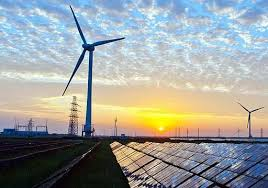Energy resources and energy transfers — IGCSE Physics (Edexcel)

About Course
Course Content
4.1: units
-
4.1: Units
-
Quiz 4.1
Energy Transfer–4.2: Discuss different energy stores
Energy Transfer–4.3 use the principle of conservation of energy
Energy Transfer–4.4: know and use the relationship between efficiency, useful energy output and total energy output:
Energy Transfer–4.5: Describe a variety of everyday and scientific devices and situations, explaining the transfer of the input energy in terms of the above relationship, including their representation by Sankey diagrams
Energy Transfer–4.6: describe how thermal energy transfer may take place by conduction, convection and radiation
Energy Transfer–4.7:explain the role of convection in everyday phenomena
Energy Transfer–4.8: explain how emission and absorption of radiation are related to surface and temperature
Energy Transfer–4.9: practical: investigate thermal energy transfer by conduction, convection and radiation
Energy Transfer–4.10: explain ways of reducing unwanted energy transfer, such as insulation
Energy & Power–4.11: know and use the relationship between work done, force and distance moved in the direction of the force: work done = force × distance moved W = F × d
Work done–4.12 know that work done is equal to energy transferred
work done–4.13: work done as gravitational potential energy
work done–4.14: work done as kinetic energy
work done–4.15: understand how conservation of energy produces a link between gravitational potential energy, kinetic energy and work
work done–4.16: describe power as the rate of transfer of energy or the rate of doing work
work done–4.17: use power formula
Energy resources and electricity generation–4.18: describe the energy transfers involved in generating electricity using different sources of energies
4.19P describe the advantages and disadvantages of methods of large-scale electricity production from various renewable and non-renewable resources
Topic Related Past Papers Questions and Marking Schemes
Consolidated Quizzes
Student Ratings & Reviews

No Review Yet
